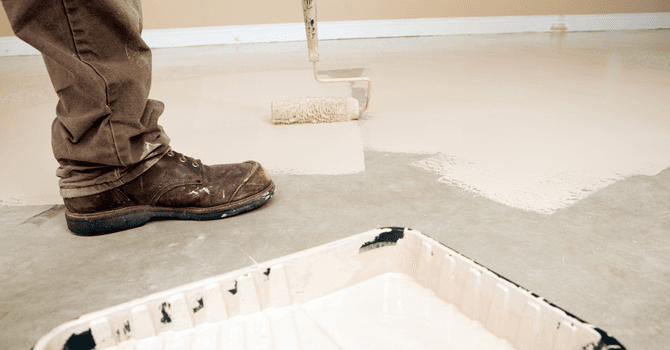
Are you hoping to paint over your garage floor but unsure how to go about it? What type of paint should you buy? How should it be applied? What are the best products available on the market and their pricing? Rest assured, you’ve come to the right place! In the following section, discover all of our tips and tricks to successfully paint over your garage floor.
Is painting a garage floor a good idea?
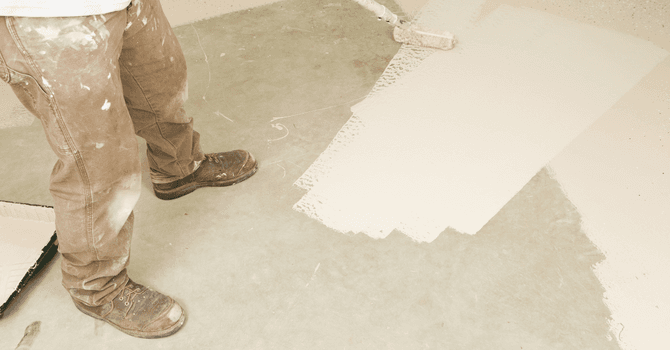
Source: Canva
Painting over your garage floor is a long-term investment that holds numerous advantages, both in terms of functionality and aesthetics.
First, it protects your floor and prevents dust, mud, and grease from embedding into it. The paint coating the surface actually helps fill in the little cracks caused by repeated car and foot traffic.
Moreover, the paint coating on the floor renders the surface stronger and able to withstand impacts, which in turn increases its durability. It also facilitates maintenance by making the surface easier to wash.
Also, note that painting your floor can add a subtle aesthetic twist to your garage since such paint is available in multiple finishes (matte, glossy, or even glittery).
As such, garage floor paint is vital if you’re hoping to protect your dwelling from wear and tear while also increasing its market resale value.
What kind of paint should be used on a garage floor?
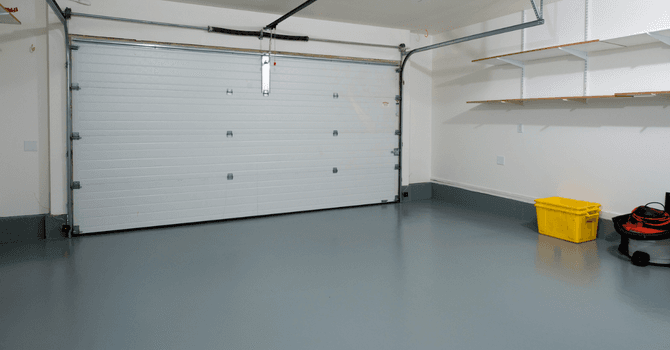
Source: Canva
Painting a garage floor isn’t the sort of project done on a whim. It’s important to choose the products used wisely for the best possible results. You have to make sure that the paint can withstand the weight of one or two cars, hold through the incessant foot and vehicle traffic, and handle tire marks, as well as stains caused by various products spilling. To achieve the latter, you have to do your research and learn all there’s to know about the different components and specifics of each product prior to jumpstarting the process. Here are 3 different types of paint commonly sold to coat a garage floor.
How to Paint a Garage Floor with Concrete Epoxy Paint
Epoxy paint for concrete surfaces is without a doubt one of the best types of concrete surface paint available on the market. It’s an oil-based paint made with a hardener granting it great strength, resins, minerals and coloured additives. It’s a top solution which results in a very durable floor that’s easy to clean and sweep.
However, note that this type of product has a limited colour palette and applying it requires some technical know-how. If the surface to be covered isn't properly prepared or painted, it risks losing all its effectiveness. Therefore, we recommend hiring a professional.
Another preventive measure before coating your garage floor with epoxy paint is to check for efflorescence on the concrete surface. The latter shows up as white powder and gives the floor a faded or even discoloured look. Should this be the case, clean the floor with a hydrochloric acid solution beforehand to prevent the paint from easily peeling off.
Polyurethane Paint
Polyurethane paints are designed specifically to coat floors and are great for high-traffic areas. If you often pull your vehicles in and out of the garage, polyurethane paint is your best bet. It has similar properties to that of epoxy but with a glossier finish. Also, some of these coatings have anti-slip properties and make very good garage resins.
Polyurethane paint is highly resistant to scratches, impacts, oil, grease, etc. It adheres well to surfaces and maintains its colour beautifully. Moreover, it has a glossy finish that gives your floor a clean and shiny look. This product is also valued for its wide range of colours to suit all preferences. It's super easy to clean and can be done with a pressure washer.
Alkyd Urethane Paint
Alkyd urethane paint, just like the above two mentioned solutions, is resistant, which makes it perfect as a ground coating. This type of paint is a solution that has both the virtues of acrylic paint and glycerin. It's available in a variety of colours and is more environmentally friendly than the other two.
In fact, it’s practically odourless and has very few volatile organic compounds (VOCs). Basically, as it dries, most of the water it contains evaporates. It’s made according to environmental standards. It happens to be a “green” version of epoxy since it’s eco-friendly. This product also has a wider range of colours.
Let it be said that alkyd urethane paint still has a few downsides: it tends to provide less coverage, isn’t as resistant to wear and tear as oil-based paints, and has the propensity to turn yellowish.
Are you looking for experts for your painting project?
Fill in our form to be connected with top-rated contractors!
How to DIY Paint a Garage Floor
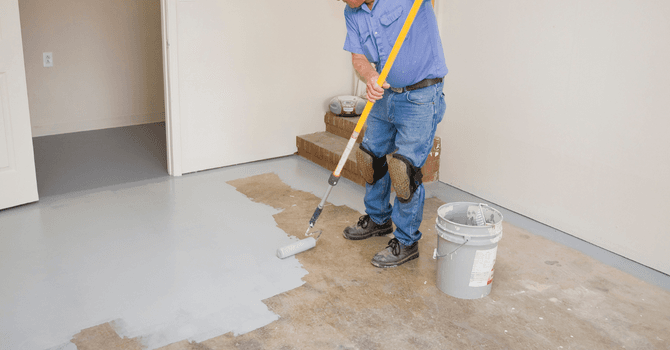
Source: Canva
Simply having access to high-quality paint doesn’t suffice when it comes to painting a garage floor, you also have to be able to tackle the steps correctly to obtain a satisfying, and durable result over time. Discover below the various steps to follow for a seamless garage floor result. But, before doing anything, here’s a list of the various tools and items that’ll come in handy for this project:
Heavy-duty broom
Bucket
≅5 cm paintbrush
Paint grid
Hose
Mop
Handle extension
Roller tray
Rags
Rubber gloves
High-pressure washer gun
Protective clothing
Protective goggles
Paint roller frame
Paint roller cover
Paint can opener
Scraper
Drill bit mixer
Before starting anything, consider the current state of your floor. If it’s already been painted and the paint is still holding fine, you can start undertaking the job at hand. However, if the paint is chipping or if the surface is showing signs of a problem whatsoever, such as excess humidity, it’s best to call in a professional to tackle the job.
1 - Prepare the surface
Start by clearing the floor. Remove everything that’s lying around. Don’t forget to clean the space outside the garage before working to prevent dead leaves and other debris from flying in. Leave the windows and doors of your garage wide open to facilitate airflow. Make sure the temperature of the garage floor isn't too low as it will allow for a better bond.
2- Clean the to-be-painted garage floor
This step will guarantee the product’s hold on the soon-to-be painted surface. Proceed by thoroughly cleaning the floor. Remove all traces of oil or grease with a rag. Grab a broom and start sweeping up all of the dirt. Spray a solvent or soap all over the concrete surface and allow 20 to 30 minutes for the product to work. Then, with a heavy-duty broom, scrub the concrete vigorously to remove all stains embedded into the surface. Now, for the fun part, before the surface dries, hose down the area with a pressure washer. Remove the excess water with a mop and let the surface dry.
3 - Apply a primer
Come to this step, apply a primer as a base coat before adding a first coat of paint. This will protect the finish and extend its service life. To do so, mix the primer’s various ingredients, dump them into a bucket, and continue mixing with a polyester-nylon paintbrush for 5 minutes. Pour long films of primer on the ground and spread the liquid along the sides of the wall with a paintbrush. With a roller, spread the primer across the entire floor while moving toward to exit to avoid finding yourself trapped inside. Allow the primer to dry for 5 to 7 hours, depending on the weather. It’s best to work under warm and dry circumstances, a day during which the humidity levels are below 70%. You’ll know the primer has dried when the colour changes and becomes clear.
4- Apply a paint coat
When applying the finishing layer, you have to, beforehand, mix the product according to the datasheet’s instructions. Just like you would a primer, pour the paint in thin films across the garage floor. Use a paintbrush to paint the perimeter of the surface and a roller to spread the product across the rest of the floor still moving toward the garage exit.
5- Add an anti-slip
Add a layer of anti-slip aggregate to prevent a slippery surface. Make sure you’re using the right amount of anti-slip aggregate. Adding too much could render the surface hard to clean. You can also opt to use decorative glitter. Not only will it conceal dirt but it’ll also give your garage a rather aesthetic look. To apply glitter, throw a handful in the air so that it’ll fall back onto the surface in a somewhat uniform way.
6- Allow the cement paint to dry
Let it dry for 24 to 48 hours, then you can start bringing items back into your garage. Don’t drag anything across the floor since it might damage the new coat of paint. The latter will be completely dry after 7 to 10 days.
How do you repaint a garage floor?
If the current coat of paint is still in good condition, it’s entirely possible to paint over it with a fresh coat of paint without having to remove the current layer. As a matter of fact, you’ll just need to apply a primer. It’s a base coat that will allow the new coat of paint to properly adhere to the former. It’s very easy to apply. Simply prepare the surface by cleaning it just as above-mentioned. Then, apply the primer, allow it to dry and then paint it over with the finishing coat. It’s as simple as that!
Cost of Garage Floor Paint

Source: Canva
When it comes to garage floor paint pricing, several factors come into play:
Type of paint selected;
Product quality;
Purchase point;
Manufacturing company, etc.
Therefore, the average can of epoxy paint costs between $30 to $107 per litre.
Denalt’s 3.7 L epoxy garage floor paint costs about $59.95 a can.
Armor Coat’s interior and exterior alkyd deck and floor paint cost $58.99 for a gallon container.
With Sico, 3.5 litres of acrylic and polyurethane latex floor paint is valued at $67.99 per can.
Get 3 renovation quotes for your garage floor painting project
RenoQuotes.com can help you get quotes for your painting project. By submitting your project, we’ll put you in contact with top-rated contractors. Fill in the form on the homepage (it only takes a few minutes), and you will get estimates from trusted professionals.
Dial 1-844 828-1588 to speak with one of our customer service representatives.
Looking for something else?
Related articles
The latest industry news, interviews, technologies, and resources.

Editorial Team
•14 Jan 2025
Chalkboard paint is definitely an evolving interior design trend; it extends creative freedom granted by no other wall treatment. It's something along the lines of being able to decorate, write, or draw on your walls unhindered. With a simple flick of the wrist—provided you’re holding a trusty wipe, chalkboard eraser, or sponge—you can start anew with a fresh canvas.
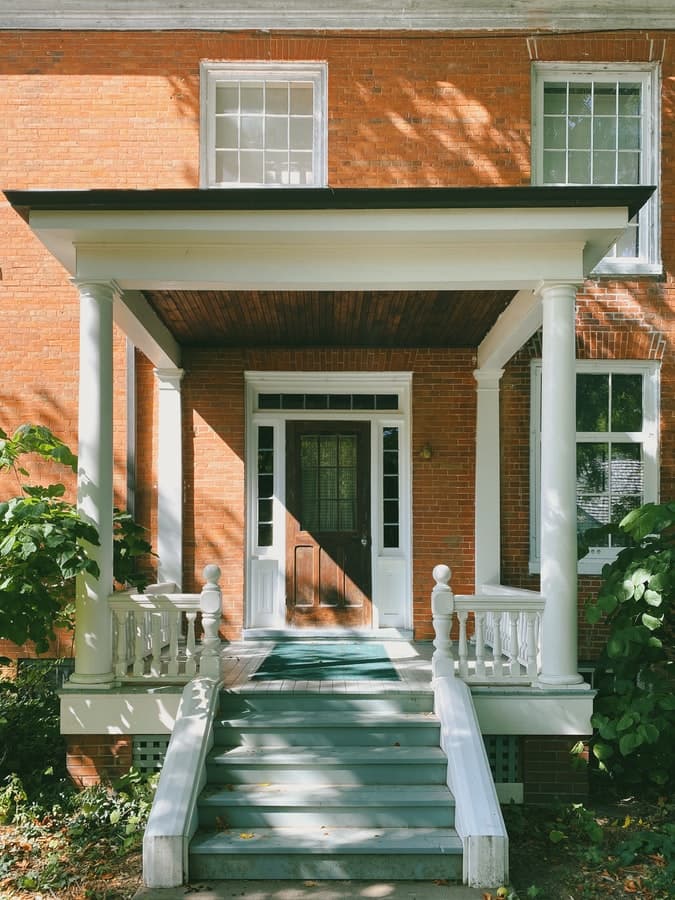
Editorial Team
•07 Nov 2023
Is the exterior siding of your brick house starting to look a little worn? If the idea of bringing it back to its former beauty by restoring it has crossed your mind, you may have considered painting as an option.

Editorial Team
•07 Nov 2023
Building a house involves a series of steps, the first one being earthwork, which consists of cleaning and preparing the land on which the structure will be built. Next up, pouring the foundation, which is a crucial step that ensures the solidity of the structure and the house’s structural strength through the years.
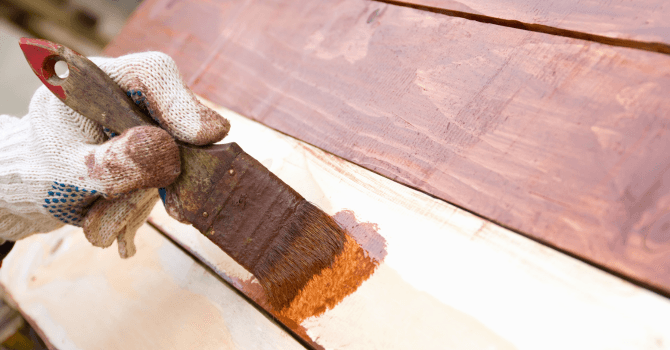
Editorial Team
•07 Nov 2023
Let’s be real, wood isn’t easily replaceable. We can all agree that wood’s warmth and versatility are especially valued. We like that it’s easily worked and offered in a variety of essences to suit all preferences. Both authentic and malleable, wood works wonders no matter what.

Amanda Harvey
•07 Nov 2023
Without a roof on your home, it would be like living outdoors. Your home's roof is essential for keeping your family, as well as your furniture, dry, cozy and warm. If there is a leak, a crack or a break detected, it is important to repair it as soon as possible so as to avoid further damage to the material underneath as well as to other parts of your home.